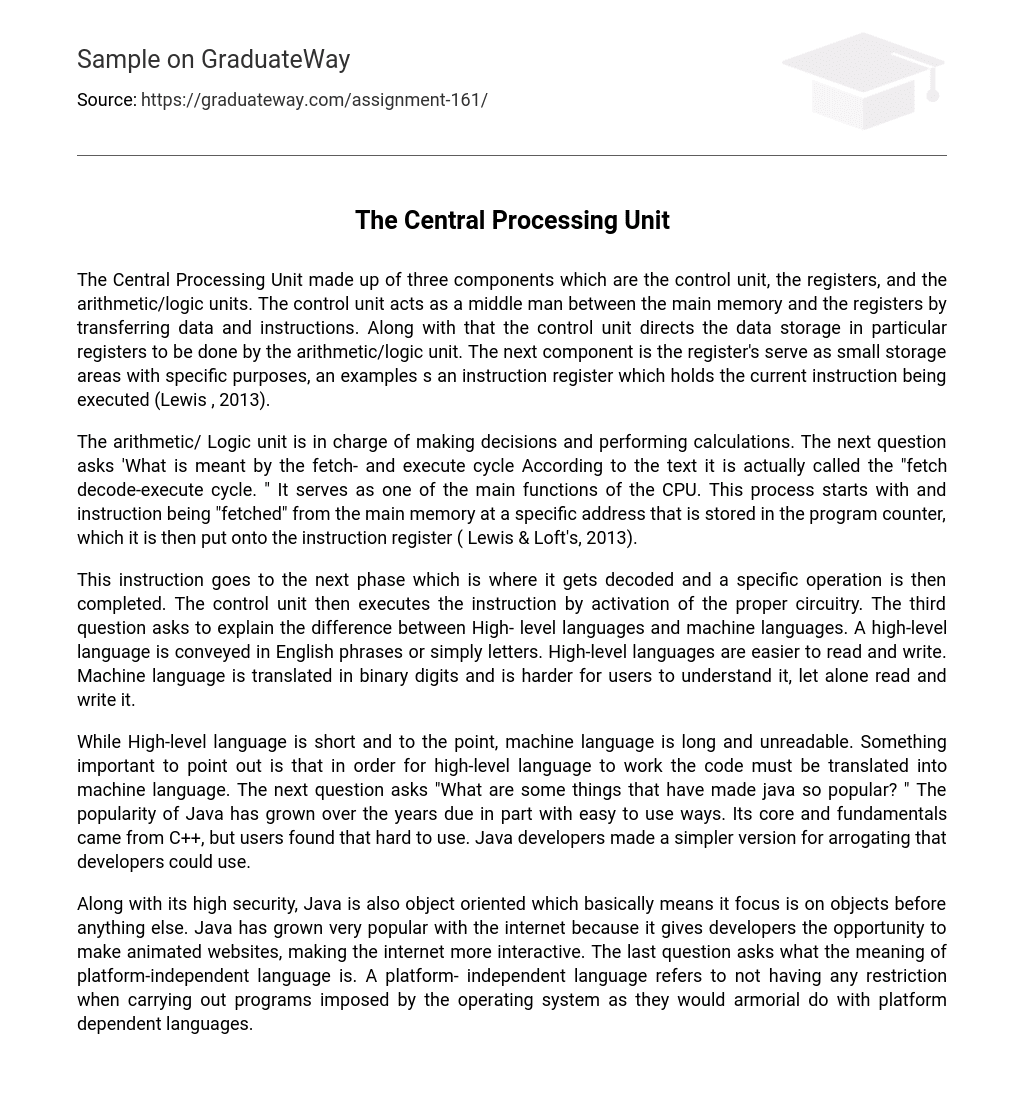The Central Processing Unit is composed of three components: the control unit, registers, and arithmetic/logic units. The control unit acts as a bridge between the main memory and the registers by transferring data and instructions. It also instructs the arithmetic/logic unit to store data in specific registers. Registers are small storage areas with specific purposes, such as holding the currently executed instruction in the instruction register (Lewis, 2013).
The arithmetic/Logic unit is responsible for decision-making and calculation. The term “fetch- and execute cycle” is actually referred to as the “fetch decode-execute cycle” according to the text. This cycle serves as a key function of the CPU. The process begins with an instruction being “fetched” from the main memory. The instruction is retrieved from a specific address stored in the program counter and placed into the instruction register (Lewis & Loft’s, 2013).
This instruction moves onto the next phase, which involves decoding and performing a specific operation. The control unit subsequently executes the instruction by activating the appropriate circuitry. The third query requests an explanation of the distinction between high-level languages and machine languages. High-level languages are expressed in English phrases or individual letters. They are easier to comprehend and compose. In contrast, machine language is converted into binary digits and proves challenging for users to comprehend, let alone read and write.
High-level language is concise, while machine language is extensive and incomprehensible. An important aspect to note is that high-level language needs to be transformed into machine language for it to function. The subsequent inquiry poses the question: “What factors have contributed to Java’s widespread popularity?” Java’s popularity has increased over time partially due to its user-friendly nature. Its foundation and principles originated from C++, but users found it difficult to work with. Consequently, Java developers created a more straightforward version that programmers could utilize.
Java is both highly secure and object oriented, prioritizing objects over anything else. Its popularity on the internet is due to its ability to create animated websites, enhancing interactivity. The final question inquires about the definition of a platform-independent language, which means it does not face limitations imposed by the operating system like platform dependent languages typically do.





